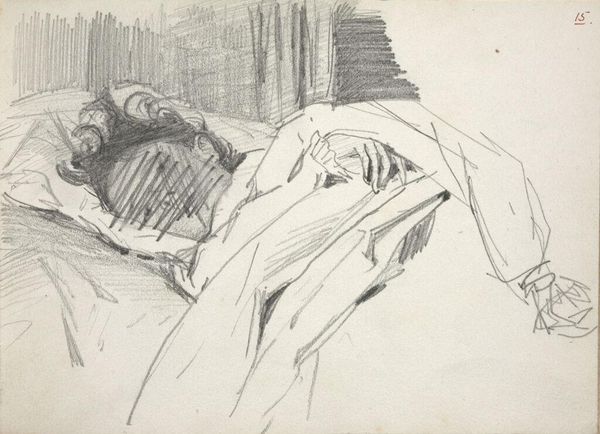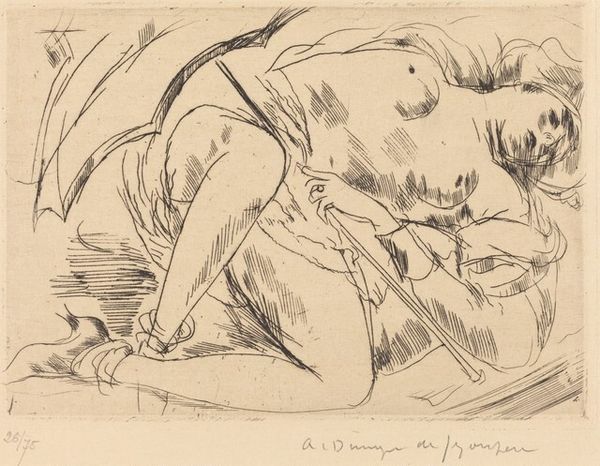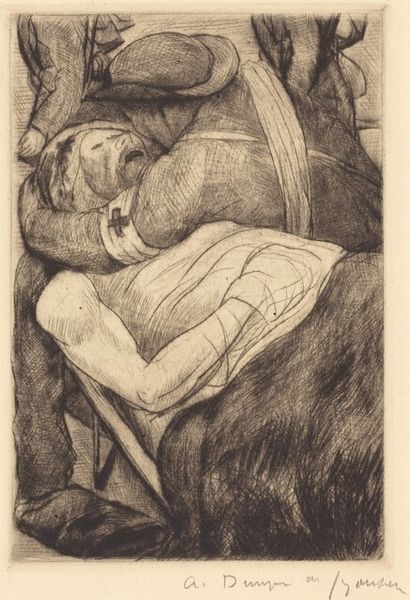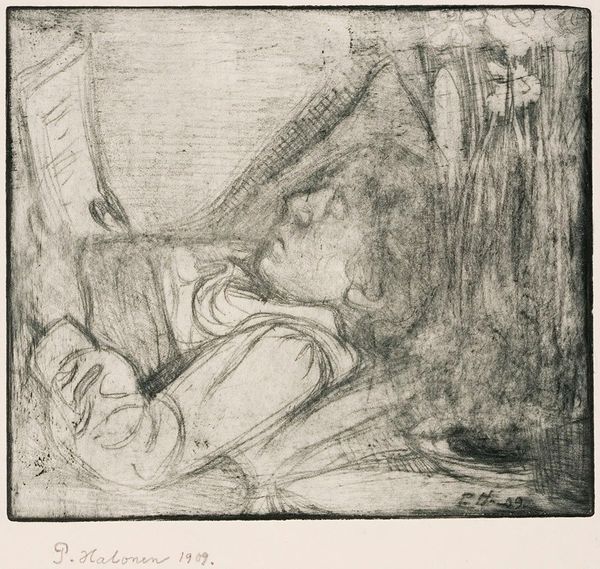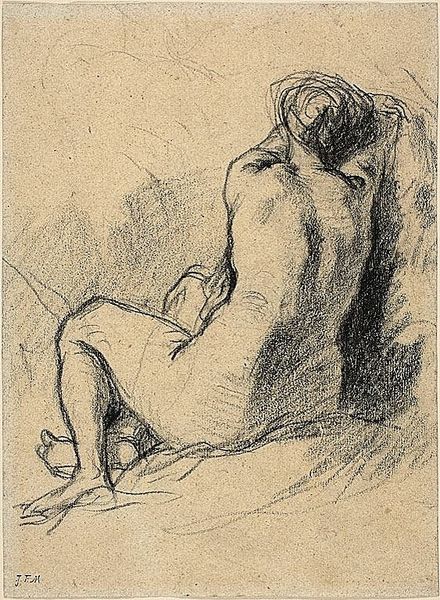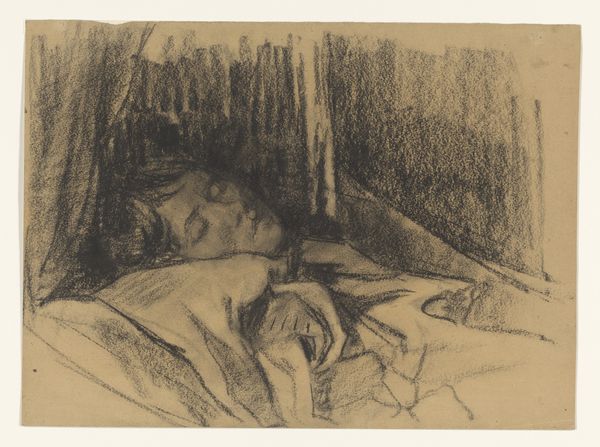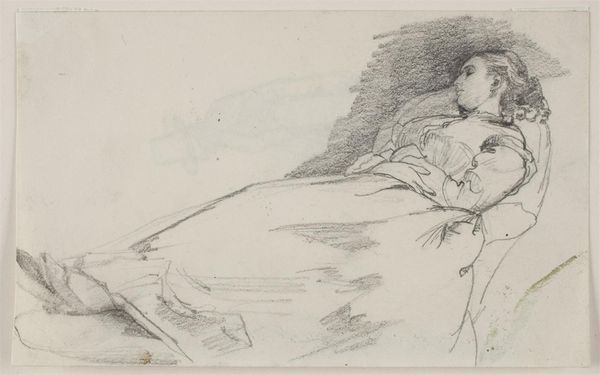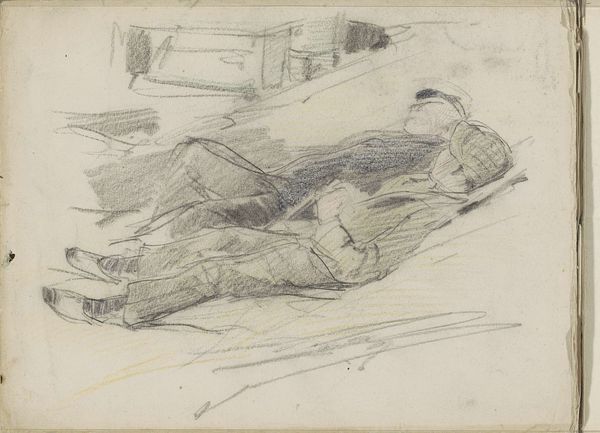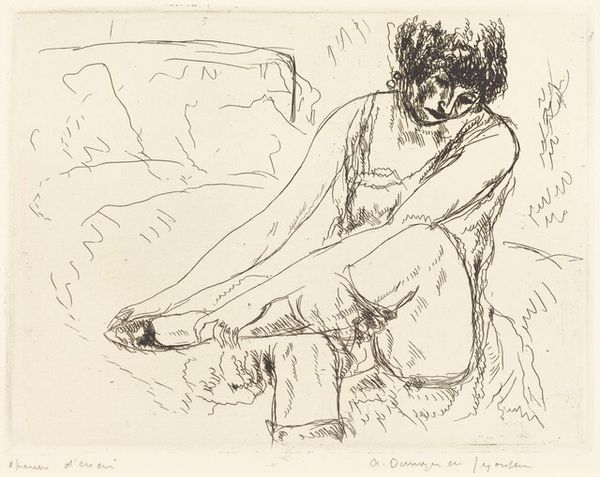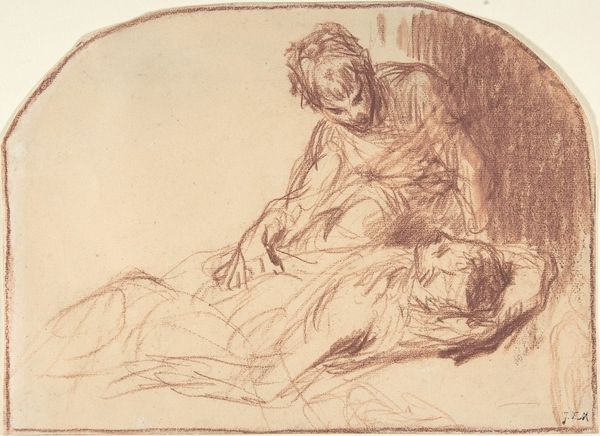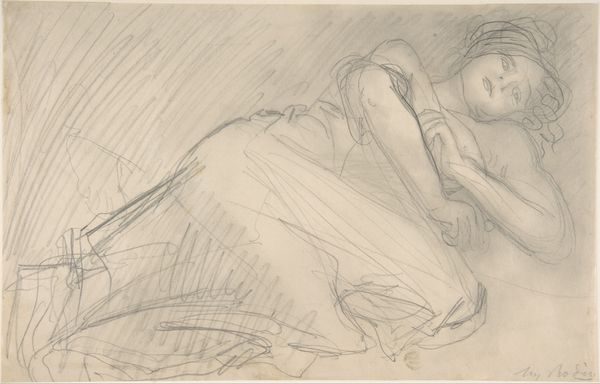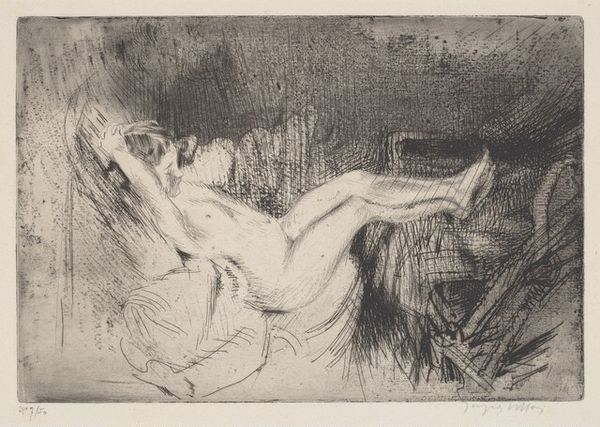
Copyright: National Gallery of Art: CC0 1.0
Curator: Andre Dunoyer de Segonzac created this etching titled "Les Demoiselles de la Marne" around 1921. Editor: It’s starkly beautiful. The lines create such rich tonal variation despite being so minimal, like light shimmering on water. It feels... both intimate and a little sad. Curator: "Demoiselles" is French for 'young ladies', which combined with 'Marne' - the area northeast of Paris known for its devastating battles during WWI, gives us potent visual metaphors. These nudes can be seen to symbolize both innocence and loss, or even resilience in the face of destruction. The aftermath lingers. Editor: I'm captivated by Segonzac’s linework here. The crosshatching is dense and controlled, creating weight, but he balances it with delicate, sparse areas that allow the eye to rest. There's real mastery in that kind of compositional control. He knew where to draw our gaze, literally and figuratively. Curator: I'm particularly drawn to how Segonzac uses shadow to create depth, concealing yet revealing. Their bodies almost meld with the landscape; nature is comforting but also an encroaching reminder. They possess a somber quietude, carrying the weight of memories unseen. Editor: Yes, there’s also something subtly Symbolist in that fusion, reflecting the period's turn inward for meaning after immense public trauma. Beyond content and title, just the way the ink bites into the paper has so much texture, echoing the physical and emotional terrain they inhabit. Curator: Exactly, it's that tangible feeling. The symbolism in this print isn’t heavy-handed. The landscape whispers of a past trauma, but the figures themselves suggest strength and enduring life. They lie intertwined. It's complex. Editor: Agreed. Looking closer, the print is a testament to the enduring power of simple, honest, visual storytelling. Segonzac coaxes the narrative through masterful manipulation of tone and line; less is absolutely more. Curator: So even in the ruin, even among the ghostly images that remain, new narratives unfold and these women continue their existence, their spirits, if you will, echoing beyond the ravages of war. Editor: Ultimately, it’s a piece where the more you look, the more you see, revealing Segonzac’s understanding not just of etching, but the complex interaction of landscape and psyche, both individually and collectively.
Comments
No comments
Be the first to comment and join the conversation on the ultimate creative platform.
